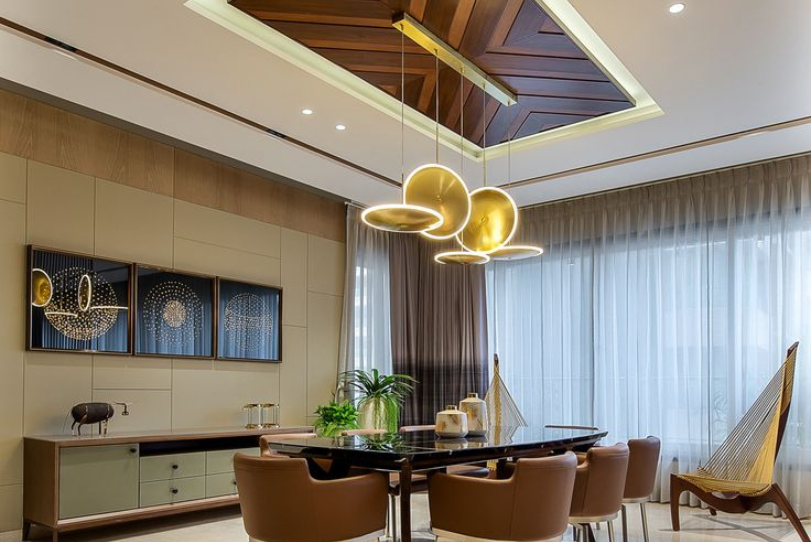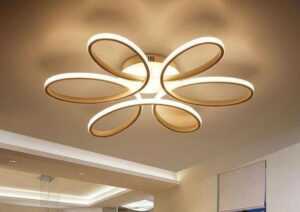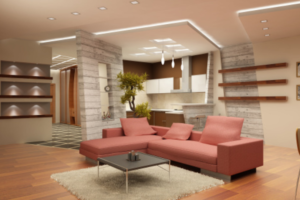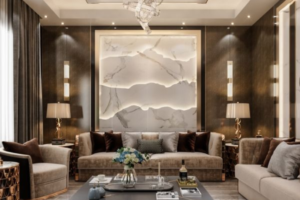False ceiling designs are an integral part of homes nowadays. A roof is a necessary part of any structure. It supports the maintenance of a unit’s structure while also offering shelter and safety. Although a roof’s primary job is to keep the house dry, some homeowners decorate it with attractive patterns to make it more appealing to the eye. The piece of the ceiling that falls below the normal roof is known as a false ceiling. There are several Pros and Cons to having a false ceiling, and we will cover both of them to help you decide whether or not you want one in your home. Know about mistakes you can avoid while installing a false ceiling at your house.
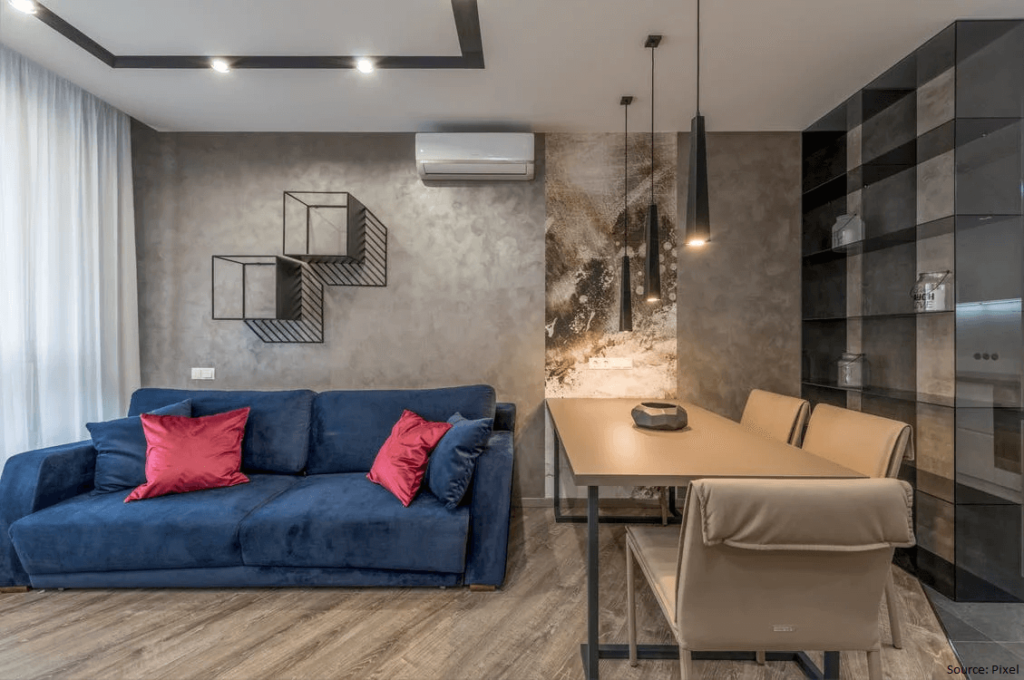
False Ceiling Pros
1.Control the Temperature of the Room
The advantage of a false ceiling design for your roof is that it adds an extra layer of the ceiling to the standard roof. This keeps the roof cool throughout the hot summer months. During the summertime, when the sun shines straight on the roof, the typical roof heats, but still the false ceiling stays cold, maintaining the temperature in check.
2.Helps to Hide Unnecessary Things on the Ceiling
The ducts, pipelines, and electrical cables are covered by a false ceiling, giving the ceiling a clutter-free, sleek, and clean appearance.
3.Maintains the Ceiling’s Height
A false ceiling will help to lower the height of a high ceiling. When you put a modern appearing artificial ceiling in the house, the room becomes fairly small. Add the false ceiling element to your unit to give it a pleasant and compact aspect. Traditional ceiling renovations take a long time and effort, however, a false ceiling may be restored by removing the damaged area and replacing it with the appropriate tiles.
4.Enhances the Room’s Acoustic Properties
In terms of acoustics and sound absorption, a false ceiling is crucial. It is constructed in such a way that it contributes to noise reduction, leaving the space calm.
5.Energy bills are Reduced
Temperatures can be lowered using false ceilings. This, in turn, contributes to lower energy expenses. You don’t need to use the air conditioner in the summer or the heaters in the winter. The addition of a false ceiling on the roof is sufficient to regulate the temperature within the house.
False Ceiling Cons
1.Upgrades and Maintenance are Required
A false ceiling necessitates ongoing cleaning. It is subject to parts dropping off or being broken. This indicates that you’ll have to continually upgrade it.
Electrical wires and pipelines covered by a false ceiling are tough to repair. A false ceiling’s detailed designs are also difficult to dust and clean. Go for a false ceiling idea in your home only if you’re willing to take on additional cleaning work.
2.Not as Long-lasting as Traditional Ceilings
False ceilings are not as sturdy as real ceilings, and they may become unstable in the event of natural disasters such as earthquakes. Another risk is that installed fixtures will fall.
3.Makes your Room Smaller
Since it is suspended below the existing roof, a false ceiling has the potential to decrease the height of a room by several inches or feet.
4.Fixture Failure is a Possibility
Before building a false ceiling, you should be aware of the risks associated. You may come to regret installing your beautiful ceiling if the light fittings that are hanging may fall off.
If you stay in a region where there are heavy rainfalls frequently, avoid installing light elements to your false ceiling. You may install show lights that are installed in the artificial ceiling so that they don’t fall out in the case of a natural disaster such as a cyclone or a minor earthquake.

